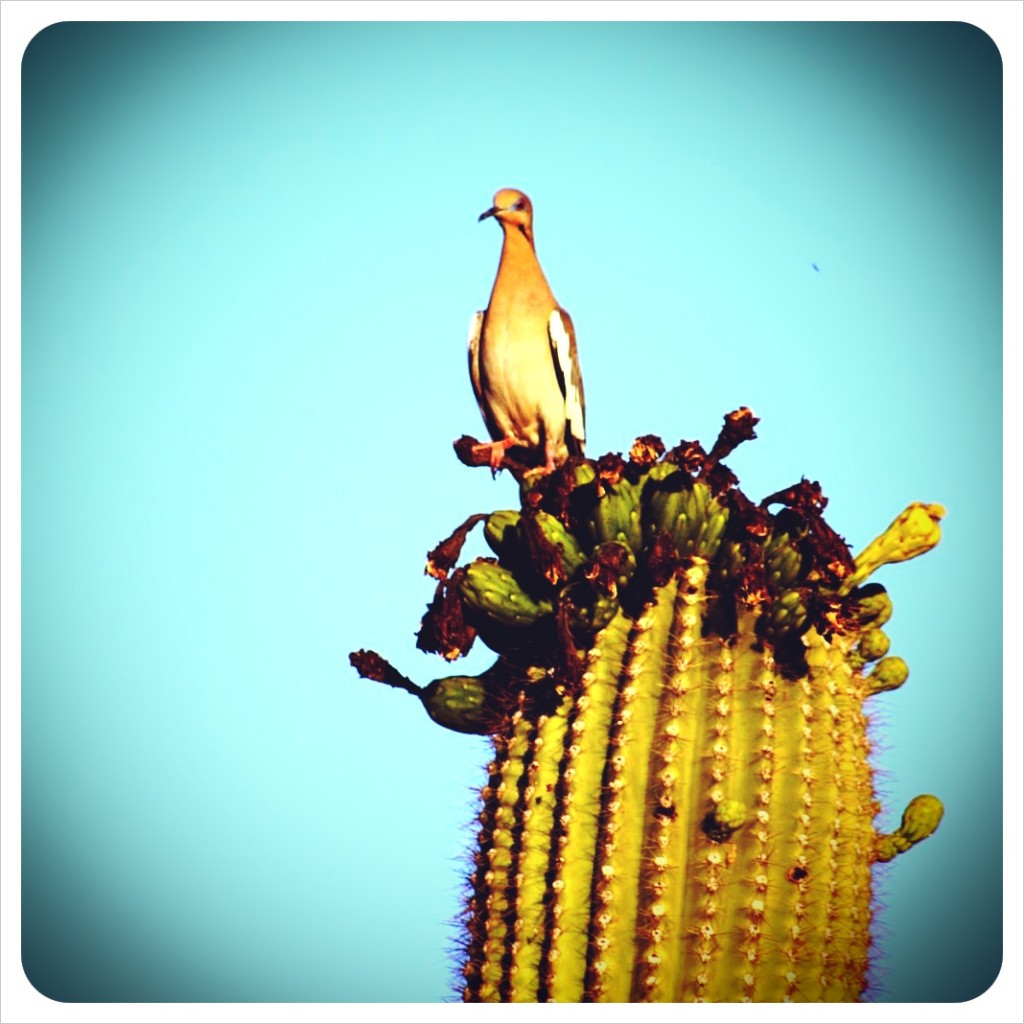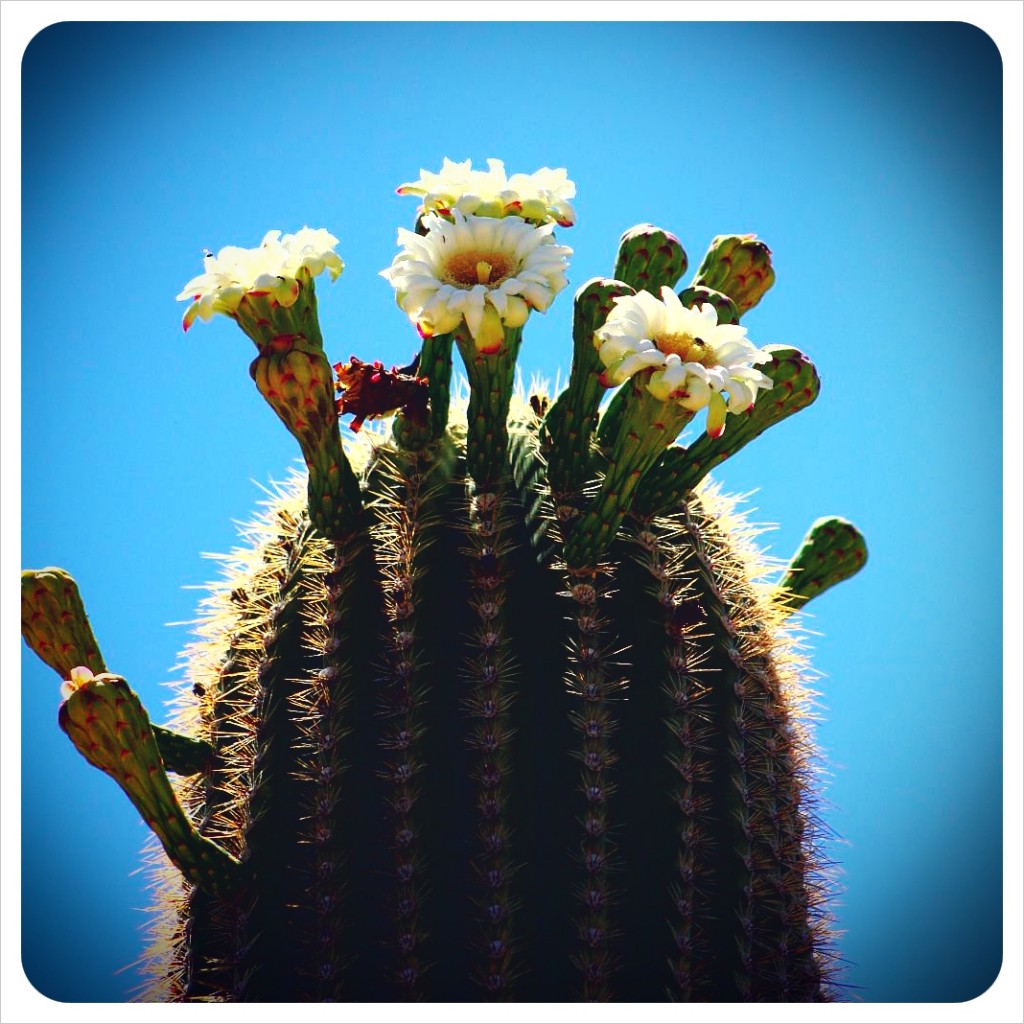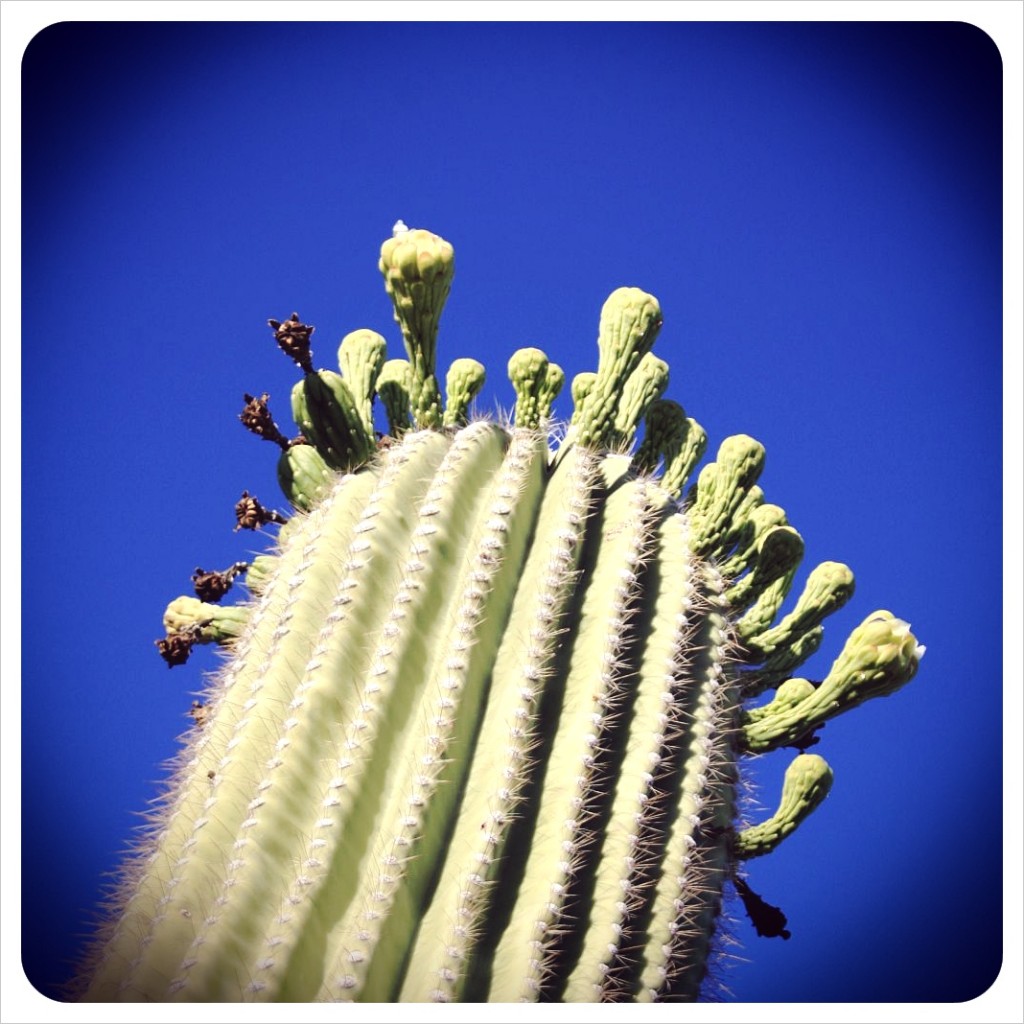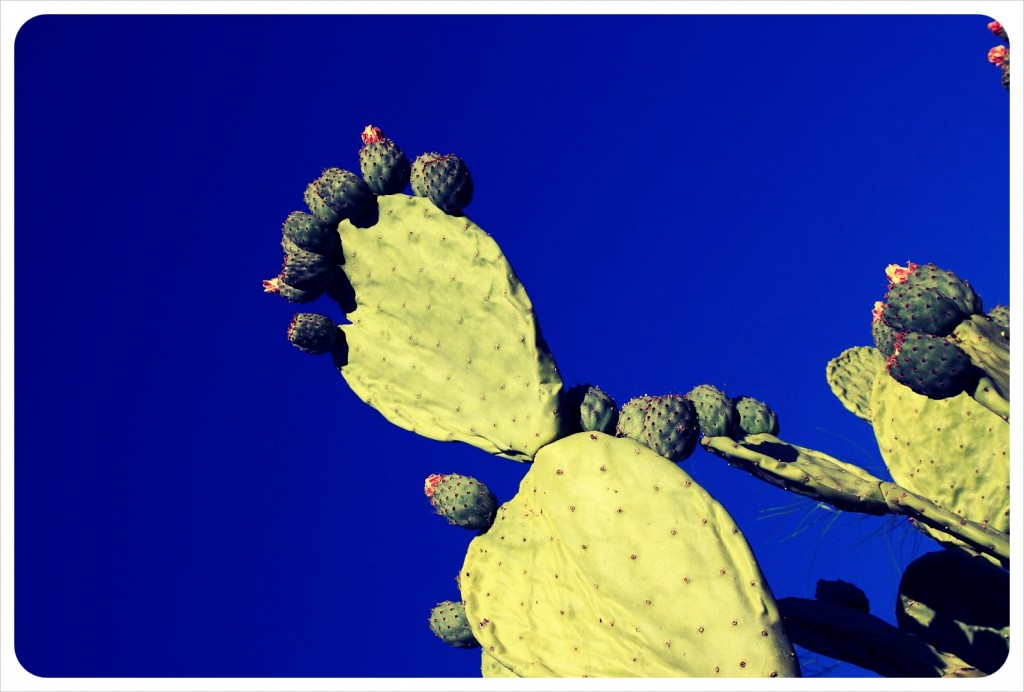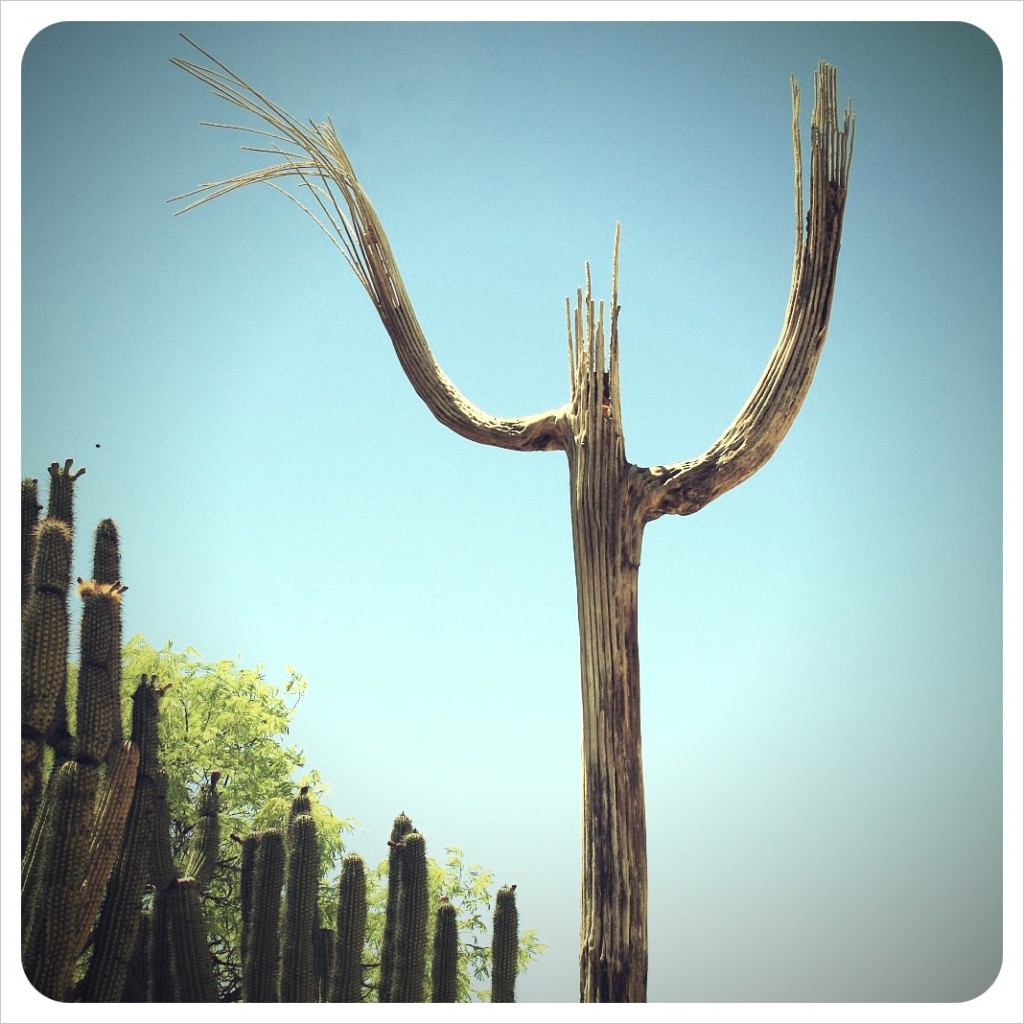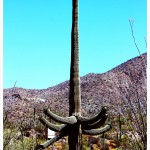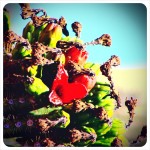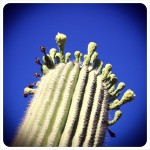Last Updated on July 9, 2012
In a sad twist of fate and a splash of coincidence, after learning of the white-winged dove at the Arizona Sonora Desert Museum, one came crashing into our window at our housesit in the foothills.
During a talk with a docent on our visit to the Arizona Sonora Desert Museum yesterday, we learned how the Saguaro cactus reproduces. The docent tossed around adjectives, plants and animals I had never heard of like cactus bones, self-sterile and white-winged dove…
In a nutshell, the endangered Saguaro cactus begins to flower in May and June when it hits 55 to 60 years old, relying on the spread of their pollen from their juicy red cactus fruit in order to fertilize the brown pepper-like pearls. Even though each cactus has several flowers, cacti are self-sterile, meaning the fertilization much occur within a flower on a neighboring saguaro.
This process relies on the white-winged dove to eat from the various flowers, inadvertently fertilizing as it flies. The intertwined, delicate balance of nature combined with the stoic beauty of the white-winged dove, perched atop the Saguaro evokes a deep appreciation of the desert far beyond what was even intended by the museum.
Today, miles away from the museum but still in the middle of the Tucson desert, one of these vital white-winged doves crashed into the back window of our housesit, smashing its head and snapping its neck. It died almost immediately as it laid lifelessly on the ground.
I am not sure if this is bad luck, a sign, or mere coincidence, but this post is a dedication to that beautiful bird, fooled by the big bay windows of human construction.
While we are already on a morbid topic – we saw our first cactus bones yesterday. When a cactus dies, all the needles and ‘meat’ rot away and what is left are several spines. A ghost cactus made of strong, tall bones remains.

